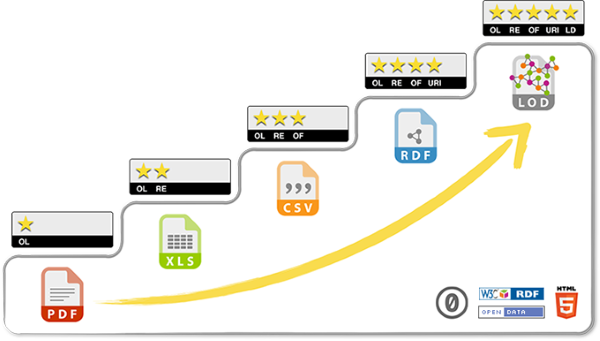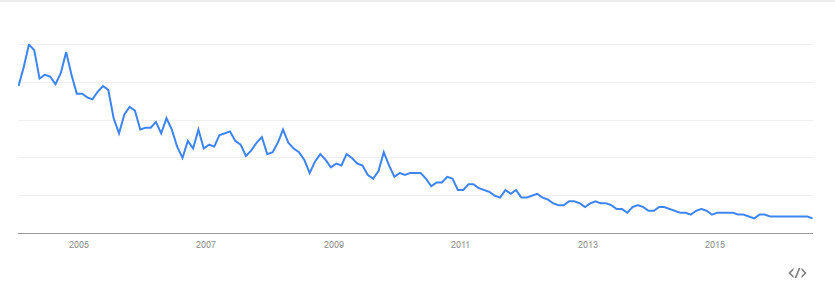That’s just Semantics...
19th of July 2016Five years ago, around 2010, the world was abuzz with the Semantic movement. The term “Semantic Web” was coined and detailed extensively by such authors as Michael Daconta. It was going to be Web of Data, enabling the user of the Web to easily find, share and use information. It was going to make possible new ways of automation. In short, computers would be able to interpret data to an even higher degree, giving them the option to make connections between data, and generate conclusions about it. The World Wide Web would be elevated from a collection of documents to a structured set of information.
This would be orchestrated in 5 steps defined by Tim Berners-Lee of 5 Star Open Data fame:
- Make your stuff available on the Web (whatever format) under an open license
- Make it available as structured data (e.g., Excel instead of image scan of a table)
- Make it available in a non-proprietary open format (e.g., CSV as well as of Excel)
- Use URIs to denote things, so that people can point at your stuff
- Link your data to other data to provide context

There have been several standards developed as support for this principle, such as the Resource Definition Framework (RDF), the Web Ontology Language (OWL), the Simple Protocol And RDF Query Language (SPARQL) and the Simple Knowledge Organization System (SKOS). Some of these even went through iterations based on certain technological developments, as RDF/XML evolved to JSON-LD. Each of these tries to create metadata in order to measure data definition, quality, security and usage and subsequently improve on it. As such the Metadata would support several initiatives (as stated by Mark Mosley in his article “Challenging EIM Issues Ahead”, written in 2010): Enterprise Data Model, Information Value/Supply Chain Analysis, Reference Data Sets, Metadata Architecture, BI Architecture, Data Rationalization Analysis,…
Picking one of the items of this list, the Enterprise Data Model is defined by using three distinct models. The Subject Area Model (SAM) is a visual representation containing a high-level perspective on areas of importance to the business. The Enterprise Conceptual Data Model (ECDM) identifies the business entities and their highest-level relationships, albeit in an application, business process and business unit neutral way. And there the Enterprise Logical Data Model (ELDM) takes over to render these entities and relationships into more detail. To get a picture of the level of detail in each, they are shown in sequence in the illustration below. There is of course also the physical data model, denoting the reality of the data when implemented, but I’ll leave that one to the database analysts and architects to draw up.
Coming back to the subject of the Semantic Web, it is clear it is in decline since 2010 if we just look at the Google Trends graph on the search term (as shown below). But it has served its purpose as it gave way to new mediums to fill the functional gap. Just as Semantic Web was born from early AI work, it in turn influenced and birthed other mediums more geared towards natural language interpretation, such as personal assistants (Apple Siri and the like) and even recommendation systems (like Amazon’s Long Tail). It paves the way for API management, complex event processing, and service discovery. But, as the Laws of the Media state, at some point it might be picked up again as a Retrieval or Reversal.

| Thought | EIM |


